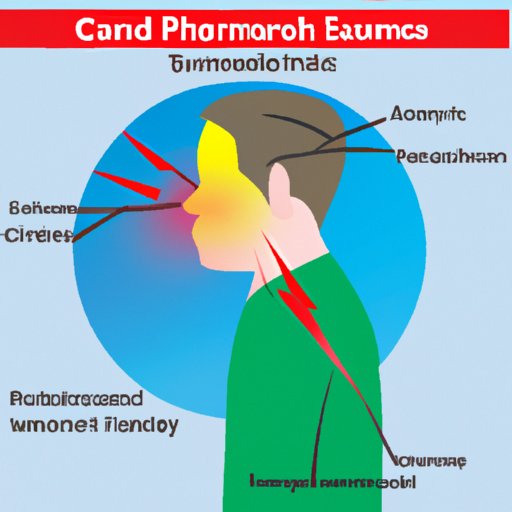I. Introduction
Protozoan infections are a significant public health concern worldwide. Protozoa are single-celled organisms that can cause numerous diseases in humans. It is crucial to be aware of protozoan-caused diseases, their symptoms, transmission, and prevention strategies. The main purpose of this article is to provide a comprehensive overview of protozoan-caused diseases and how to prevent them.
II. Protozoan Infections: Understanding the Causes and Effects on the Human Body
Protozoa are capable of infecting humans and causing various diseases. These infections can have mild symptoms or life-threatening consequences. Protozoan infections can occur through various modes of infection, such as contaminated food and water, sexual contact, insect bites, and person-to-person contact. Once in the body, protozoa can affect the gastrointestinal tract, liver, spleen, brain, and other vital organs.
III. 5 Protozoan-caused Diseases: Symptoms, Treatment, and Prevention
There are several protozoan-caused diseases, and five of the most common include:
1. Malaria
Malaria is a mosquito-borne protozoan infection caused by the Plasmodium parasite. It causes fever, headache, chills, and impaired cognitive function. Malaria can lead to severe complications such as organ damage and death, especially in children and pregnant women. Treatments include antimalarial medication and prevention strategies such as mosquito control measures such as nets or repellents.
2. Amoebiasis
Amoebiasis is a waterborne disease caused by the Entamoeba histolytica protozoan. It can cause diarrhea, abdominal pain, and fever. Severe cases can lead to liver abscesses and other complications. Diagnosis is through fecal examination, and treatment includes antimicrobial medications.
3. Leishmaniasis
Leishmaniasis is a vector-borne disease caused by the Leishmania protozoan. It is transmitted by the sandfly, affecting the body’s immune system, leading to skin sores, ulcers, and fever. Diagnosis is through blood tests, and treatment includes antiparasitic medications and prevention measures.
4. Giardiasis
Giardiasis is a waterborne disease caused by the Giardia protozoan. It can cause diarrhea, bloating, and abdominal pain. Diagnosis is through a stool examination and treatment includes antimicrobial medication and prevention strategies such as good food and water practices.
5. Toxoplasmosis
Toxoplasmosis is a disease caused by the Toxoplasma protozoan found in contaminated animal feces. It can cause flu-like symptoms, serious illness in pregnant women and immunocompromised individuals. Diagnosis is through a blood test, and treatment includes antimicrobial therapy and prevention strategies like avoiding contaminated food or water.
IV. Top 3 Protozoan-Induced Illnesses You Need to Be Aware Of
The top three protozoan-induced illnesses include Malaria, Amoebiasis, and Leishmaniasis. Malaria remains the most significant protozoan-induced illness worldwide, causing mortality rates of up to a million deaths per year. Amoebiasis and Leishmaniasis also cause significant morbidity and mortality, particularly in endemic regions. The impact of these illnesses is felt not just on individuals but also on communities and the country’s economy.
V. Dangers of Protozoan Diseases and the Need for Timely Diagnosis and Treatment
Protozoan-caused infections can have severe, long-lasting, or life-threatening effects if left untreated. Malaria, for example, can affect the central nervous system leading to bouts of seizures, coma, and even death. Similarly, Toxoplasmosis can cause miscarriages or birth defects in pregnant women. It is crucial to seek timely medical attention and adhere to prescribed treatment to avoid the long-term impact of protozoan-caused diseases.
VI. Exploring the World of Protozoans: Diseases They Cause and How to Stay Protected
To avoid protozoan-caused diseases, it’s crucial to practice good hygiene and take preventative measures such as treating contaminated water sources with chlorine or using water filters. Additionally, take mosquito control measures in malaria-endemic regions, practice safe sex, and avoid handling cat litter and soil. Public health programs aimed at reducing the incidence of protozoan-caused diseases can also help reduce their impact on society.
VII. From Malaria to Toxoplasmosis: How Protozoan Diseases Affect Millions of People Worldwide
Protozoan-caused diseases affect millions of people worldwide, with the greatest impact in low and middle-income countries. These diseases cause significant mortality, morbidity, and economic burden. Efforts to combat these diseases include developing and improving available treatments, preventing transmission, and investing in research to develop vaccines and other preventative measures.
VIII. Conclusion
Protozoan-caused diseases pose a significant threat to human health worldwide. It is crucial to understand the causes, symptoms, diagnosis, and treatment of these diseases to improve preventative measures and reduce their impact. UN objectives such as the global health agenda and sustainable development goals aim at reducing the incidence of these diseases worldwide. It is time to take action and work together towards reducing the burden of protozoan-caused diseases on society.
